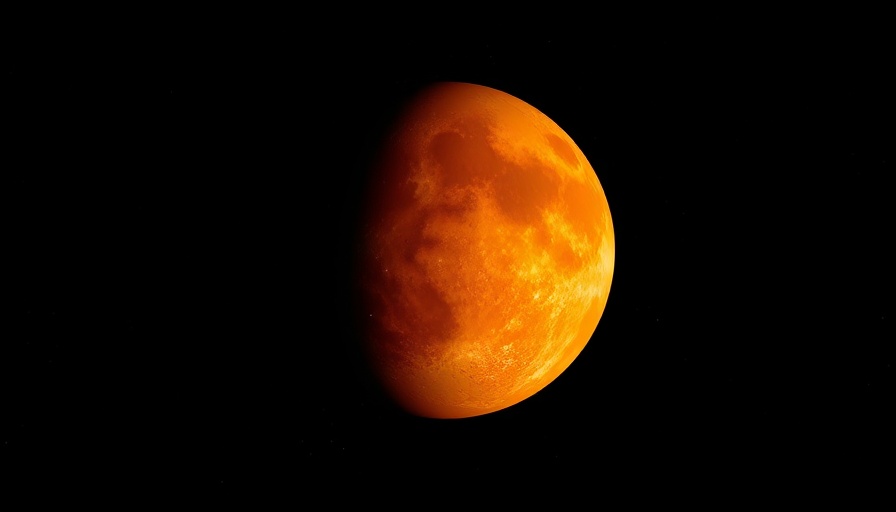
Have We Been Wrong All Along About Mars’ Color?
Mars is renowned for its striking red appearance, a feature that has captivated astronomers and laypeople alike for centuries. Traditional scientific belief attributed this reddish hue to rust, specifically iron oxides known as hematite, suggesting that Mars’s dry surface conditions were responsible for the formation of this rust over billions of years. However, recent studies are challenging this established narrative.
The Shifting Paradigm of Martian Rust
A groundbreaking study published in Nature Communications has unveiled a more likely culprit for Mars' characteristic color: ferrihydrite, a water-rich iron oxide. This finding posits that Mars was not as dry as once believed; instead, it suggests that the planet had significant amounts of liquid water in its past, opening up new avenues for understanding the planet’s history.
Why This Matters: Implications for Mars’ History
The implications of this discovery are profound. If ferrihydrite—believed to form in the presence of liquid water—accounts for Mars’ reddish coloration, it indicates that Mars underwent rusting earlier in its geological timeline than previously hypothesized. As lead author Adomas Valantinas stated, "Ferrihydrite could only have formed when water was still present on the surface". This establishes a connection between the planet's surface chemistry and its habitability, igniting excitement about the potential for ancient life on the planet.
How Did We Get Here?
This new understanding emerges from a combination of high-resolution spacecraft observations and innovative laboratory analyses, marking a significant evolution in planetary science. Observational data was gathered from missions such as the European Space Agency’s Trace Gas Orbiter and NASA’s Mars Reconnaissance Orbiter, which enabled researchers to analyze Martian dust mineralogy in ways that previous studies could not.
Future Missions and Their Potential
As scientists dive deeper into Mars’s mysteries, upcoming missions, including NASA’s Perseverance rover and ESA's Rosalind Franklin rover, aim to collect soil samples that will further clarify the mineralogic composition of the planet's surface. The promise of bringing back concrete evidence can either bolster the new theory surrounding ferrihydrite or challenge it once again. Such confirmation is crucial not only for our understanding of Mars but also for the broader implications concerning the foundation for life beyond Earth.
Emotional Resonance of Discovery
The ongoing evolution of our understanding of Mars reflects humanity's enduring fascination with the cosmos. From ancient civilizations who named it after the God of War to modern scientists probing its secrets, the quest to decipher Mars’s past reflects a desire to uncover deeper connections to our own existence and the possibility of life elsewhere in the universe.
Call to Action: Engage with Mars Research
As we continue to reshape our understanding of the universe, engage with community discussions, read dynamic articles about space exploration, or even delve further into current research studies. The quest for knowledge about Mars is not just a scientific endeavor; it's an invitation for all of us to seize a deeper understanding of our place within the cosmos.
 Add Row
Add Row  Add
Add 


Write A Comment